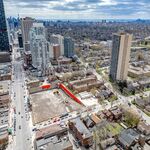nfitz
Superstar
Not at all.High Speed Rail should have very few stations on the route to maximize the speed at which the trains can travel at. Ideally, you'd want a stop every 150-200km, so Kitchener's stop could be deemed too close. These distances are typical throughout Europe, but there are some exceptions.
This is for 300 km/hr high-speed service. What Ontario is proposing is 200 km/hr high speed service, similar to what they use in UK, on likes such as the Great Western mainline from London to Cardiff. Which has stops about every few km. Not all trains stop at every stop.
Even if you look at countries that do run 300 km/hr services, they also run local services, often on the same tracks.




